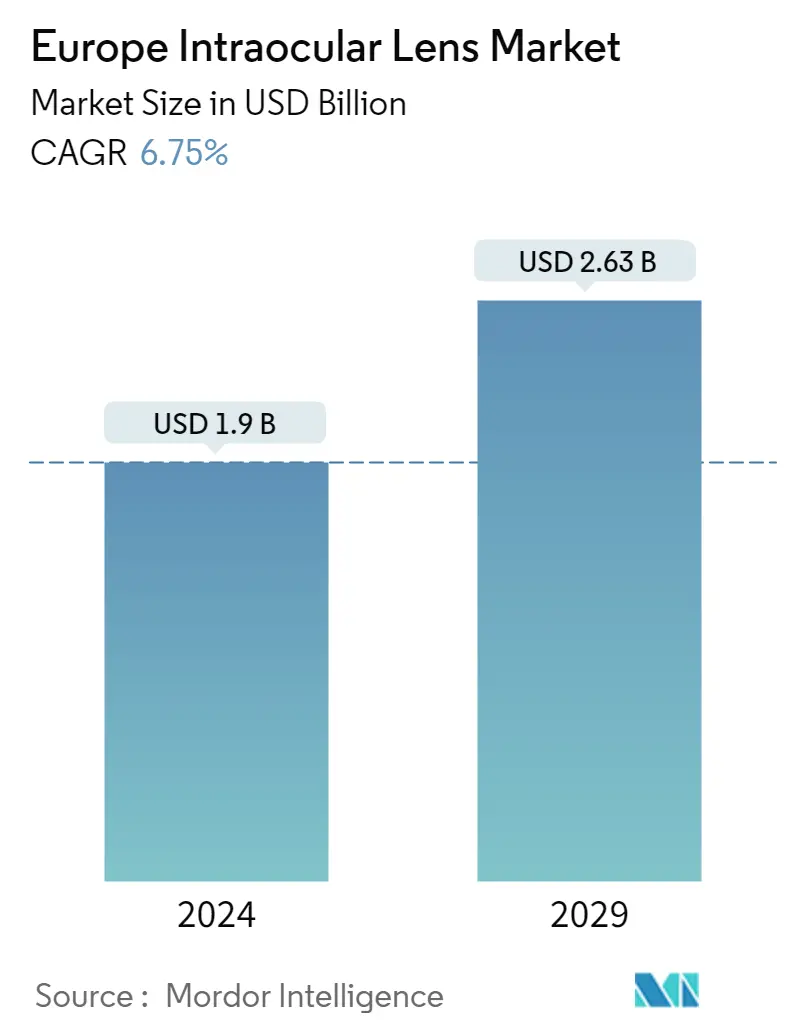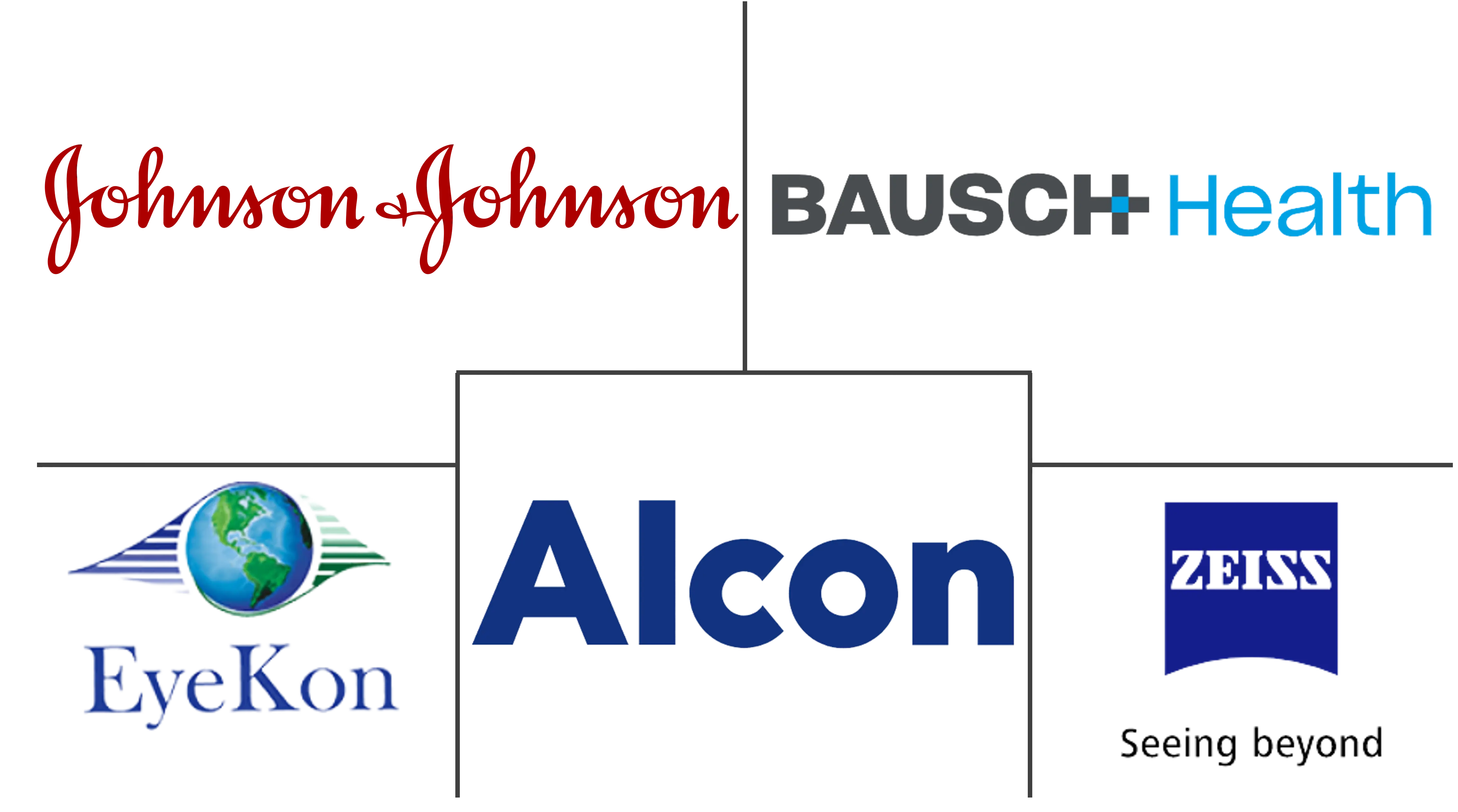Market Size of Europe Intraocular Lens Industry

| Study Period | 2019 - 2029 |
| Base Year For Estimation | 2023 |
| Market Size (2024) | USD 1.90 Billion |
| Market Size (2029) | USD 2.63 Billion |
| CAGR (2024 - 2029) | 6.75 % |
| Market Concentration | Low |
Major Players
*Disclaimer: Major Players sorted in no particular order |
Need a report that reflects how COVID-19 has impacted this market and its growth?
Europe Intraocular Lenses Market Analysis
The Europe Intraocular Lens Market size is estimated at USD 1.9 billion in 2024, and is expected to reach USD 2.63 billion by 2029, growing at a CAGR of 6.75% during the forecast period (2024-2029).
- The COVID-19 pandemic had a profound impact on ophthalmic care in Europe during its initial phase. A study published by PubMed in March 2021 showed that the pandemic resulted in a significant reduction in ophthalmology outpatient clinic appointments by 87.2%, ophthalmic surgeries by 90.9%, outpatient referrals to ophthalmology by 50.2%, and ward reviews by 50% in the United Kingdom during the first peak of the pandemic. The article also stated that there were 1,377 canceled appointments, with 6.8% of them deemed appropriate for teleophthalmology.
- Thus, owing to the pandemic, the overall ophthalmology care market in Europe was significantly impacted during the initial pandemic phase, which reduced the usage of the intraocular lens as well. However, as the pandemic has subsided currently, ophthalmic care has gone back to normal, so the Europe intraocular lens market is expected to have stable growth during the forecast period of the study.
- Factors such as the increasing burden of cataracts and other ophthalmic disorders, technological advancements in intraocular lenses, and the launch of new products are expected to enhance market growth.
- The rising ophthalmic disorders, such as cataracts, refractive disorders, and diabetic retinopathy, among others, around Europe are one of the major factors driving the market growth. For instance, according to an article published by Pediatric Diabetes in January 2022, a study was conducted in Germany and Austria, which showed that there was a high prevalence of cataracts in pediatric diabetic patients. The study included 92,633 patients with type 1 diabetes aged 0.5-21 years, out of which 303 had a cataract diagnosis. Thus, the high prevalence of cataracts in diabetic patients is expected to enhance the adoption of intraocular lenses during the forecast period of the study.
- Moreover, the increasing prevalence of diabetes is also expected to boost the market growth. For instance, according to the data published by IDF in 2022, an estimated 413,042 people were living with type 1 diabetes in the United Kingdom in 2022. Hence, as diabetic patients are more prone to cataracts, the increasing prevalence of diabetes in the region is expected to have a significant impact on the market growth.
- Moreover, developments by major market players, such as product launches, mergers, and acquisitions, are also expected to boost market growth, as this will increase access to more technologically advanced products. For instance, in June 2021, Johnson & Johnson launched its TECNIS Eyhance Toric II intraocular lens (IOL) with TECNIS Simplicity Delivery System and made it available for the treatment of cataracts patients with astigmatism in Europe.
- Hence, the factors above, such as the rising ophthalmic disorders and the increasing cases of cataracts in diabetic patients, are expected to boost market growth. However, the high cost of intraocular lenses is expected to impede market growth.
